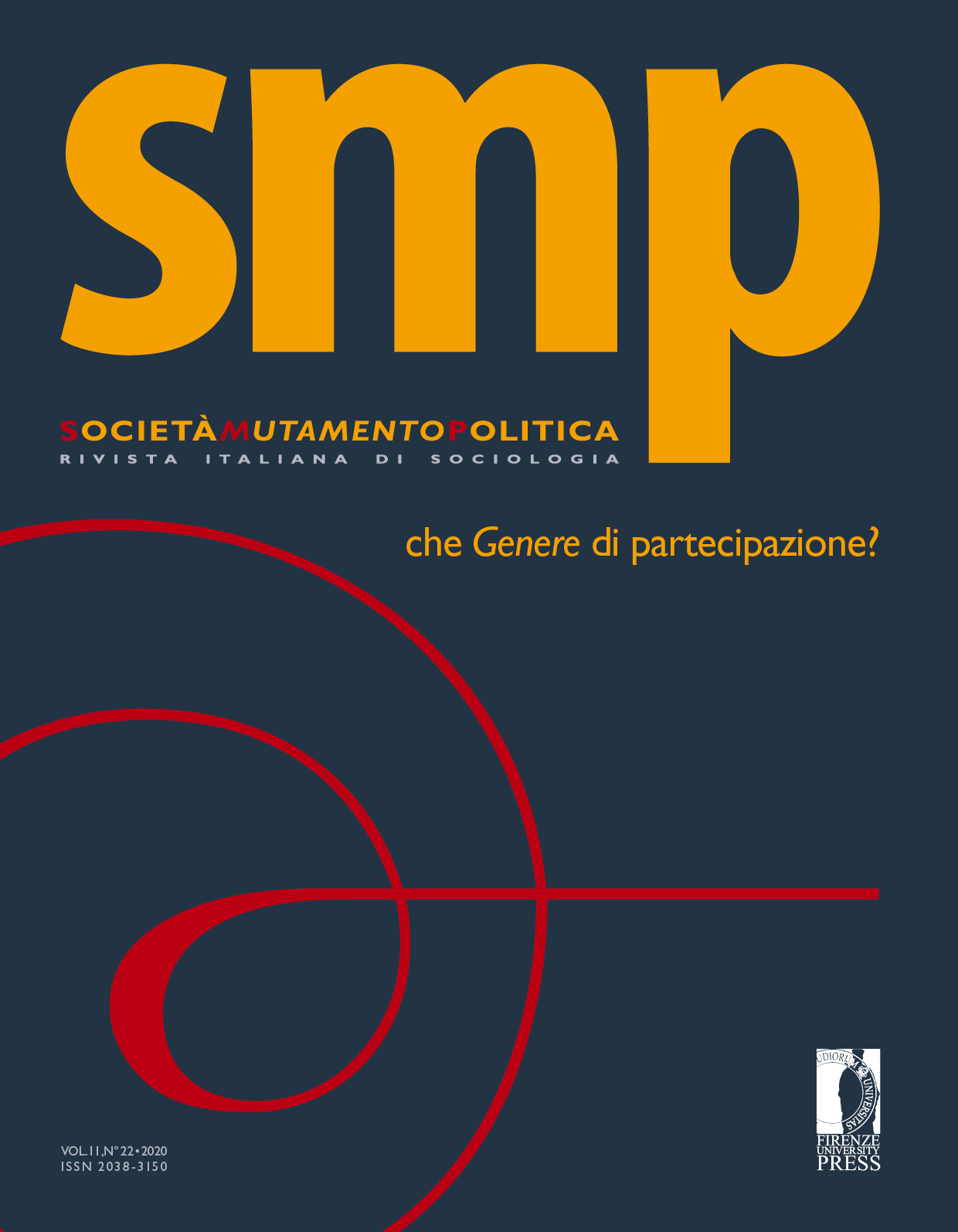Quale genere di astensionismo? La partecipazione elettorale delle donne in Italia nel periodo 1948-2018
Published 2021-03-01
Keywords
- Abstentionism,
- gender gap,
- political socialisation,
- social peripherality
How to Cite
Abstract
In the study of voter turnout, a gender perspective is useful in many ways. Since in Italy women gained the right to vote relatively late (only in 1946), a gender gap perspective is utmost handy to grasp why women had an immediate and massive participation over the First Republic. It is also relevant for understanding why their institutional representation comparatively still scores low and why women still do not bear a grounded interest for politics. Previous research explains this anomalous behaviour (high turnout coupled with low institutional presence and interest) through the overwhelming social conformism in the Fifties and Sixties as an output of a stark contrast between mass parties, Catholic influence and deep social peer pressure. In the Second Republic, the explanation for the rise of female abstention is related to both the secularization of social and family behaviours and a general disaffection towards politics. This article outlines a long-term read of gender gap in the political turnout (1948-2018) through the aid of two sections (one pointing out the initial characteristics for a strong mobilization of female voters and another pinpointing the reverse phenomenon in the last 30 years). We then offer some points for discussion about attributed meanings, working from within inequalities and possible future effective policies to contain and reduce the gender gap in political turnout.


